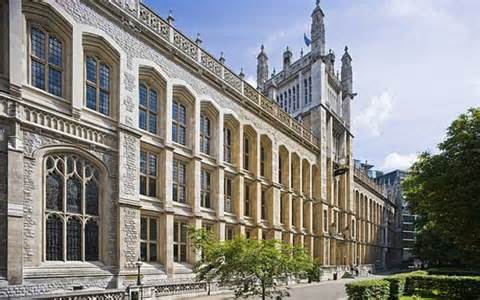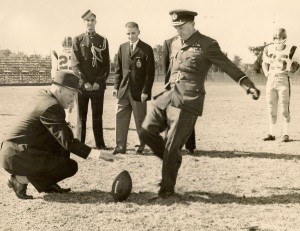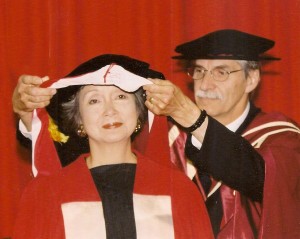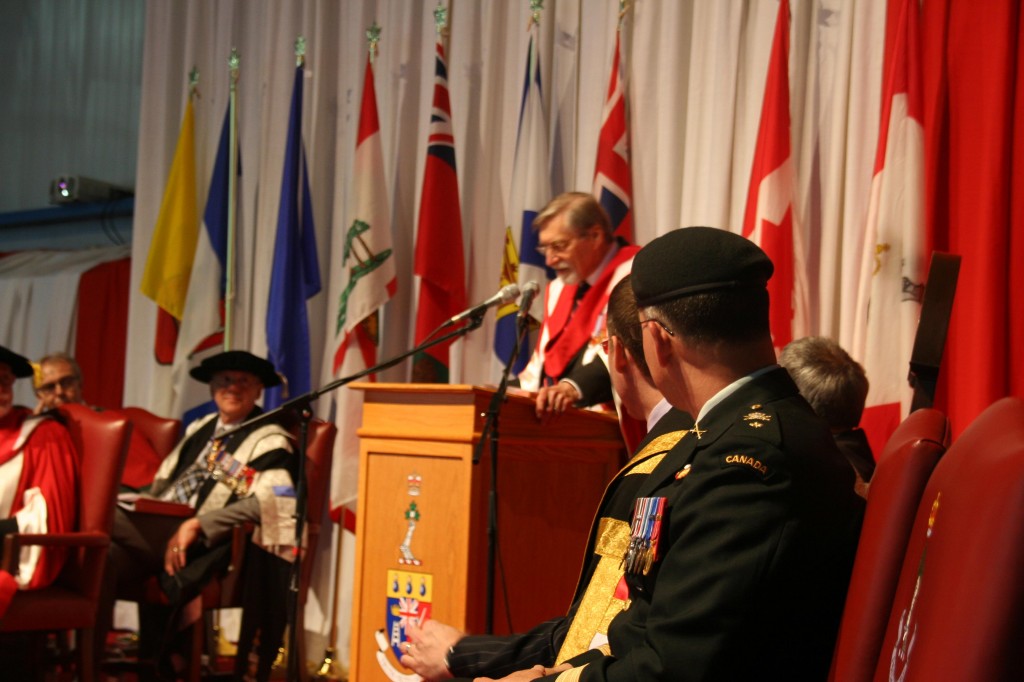
E3161 Victoria Edwards (RMC 2003) interviewed 5992 Dr. Jim Barrett (CMR RMC 1964), who served as cadet, officer, professor, dean, and Professor Emeritus at Royal Military College of Canada.
e-veritas: When were you on RMC and Canadian Defence Academy staff – start & finish?
 Dr. Jim Barrett: After graduation from RMC, I served as an Air Navigator in 405 Squadron, Maritime Air Command. In August, 1967, I was posted from RCAF Greenwood to the RMC Mathematics Department as a lecturer. While teaching, I became a part-time graduate student- the first in the Science Division- and received an MSc in Mathematics at the 1971 Convocation. Medically released in late 1971, I studied at the University of London before returning to RMC as a sabbatical replacement in 1973. I was offered a position as an Assistant Professor in 1975, promoted to Associate Professor in 1980 and to Professor in 1985. In 1990 I was appointed Dean of Science and RMC’s first Dean of Continuing Studies in 1997. When the Canadian Defence Academy was formed in April 2002, I was appointed Director of Learning Management and, concurrently, RMC’s Vice Principal for Continuing, Integrated and Satellite Programs. I retired from CDA and RMC in July 2008, and became a Professor Emeritus. Since retirement, I remain engaged with the world of military education as a volunteer with NATO’s Defence Education Enhancement Program, and with the Partnership for Peace Consortium of Defence Academies and Strategic Studies Institutes.
Dr. Jim Barrett: After graduation from RMC, I served as an Air Navigator in 405 Squadron, Maritime Air Command. In August, 1967, I was posted from RCAF Greenwood to the RMC Mathematics Department as a lecturer. While teaching, I became a part-time graduate student- the first in the Science Division- and received an MSc in Mathematics at the 1971 Convocation. Medically released in late 1971, I studied at the University of London before returning to RMC as a sabbatical replacement in 1973. I was offered a position as an Assistant Professor in 1975, promoted to Associate Professor in 1980 and to Professor in 1985. In 1990 I was appointed Dean of Science and RMC’s first Dean of Continuing Studies in 1997. When the Canadian Defence Academy was formed in April 2002, I was appointed Director of Learning Management and, concurrently, RMC’s Vice Principal for Continuing, Integrated and Satellite Programs. I retired from CDA and RMC in July 2008, and became a Professor Emeritus. Since retirement, I remain engaged with the world of military education as a volunteer with NATO’s Defence Education Enhancement Program, and with the Partnership for Peace Consortium of Defence Academies and Strategic Studies Institutes.
e-veritas: What did you mainly teach?
More
Dr. Jim Barrett: Over thirty-odd years in the Mathematics Department I taught pretty much the entire spectrum of applied mathematics and theoretical physics courses that were available. In the 1960s the Departments of Physics and Mathematics jointly offered an Honours degree in Mathematics and Physics and, in collaboration with the Department of Electrical Engineering, an Engineering Physics degree. In those days there was very little pure mathematics taught- the focus was on applied mathematics and theoretical physics. Much has changed since then. After 1997 I taught some mathematics courses for Continuing Studies, and that taught me some new lessons about the world of learning. It’s all been interesting.
e-veritas: On 22 February 1994 Hon Paul Martin, the Minister of Finance, announced in his budget that two of Canada’s three military colleges would close. At that time, you were Dean of Science at RMC. What do remember about that time?
Dr Jim Barrett: Within a year and a half, the three Canadian Military Colleges would effectively be consolidated into one college, the Royal Military College of Canada/le Collège militaire royal du Canada. That was a challenging, difficult, and often a painful few years, as the College strained to accept cadets, professors and programs from Royal Roads Military College and le Collège militaire royal de Saint-Jean. Throughout the entire transition the Commandant, Principal and indeed the entire military and academic leadership of the College worked together in as close a partnership as I have seen in my time at the College. That period of transition and consolidation is a remarkable story, one that somebody should write before memory fades.
For the military and academic leadership at RMC, the February 1994 budget was a sharp reminder of the College’s vulnerability to the national economic and political climate. The closure of RRMC and CMR also made clear that not everyone in the Canadian Forces was a fan of the military colleges. “Two down, one to go” was one phrase that was bandied about in Ottawa, and there is evidence that the decision to maintain RMC was far from unanimous. In practical terms, it meant that there was much discussion about what form RMC programs should eventually take. There were lots of opinions, some quite radical, and there was considerable relief when NDHQ (or perhaps the Minister) directed that the College would continue to be a degree-granting institution. The College staff were to be reduced by 15%, some academic programs were to be closed, and all remaining programs were to be offered in both official languages. The most painful loss for the Science Division was its cherished Engineering Physics program.
The larger question was about the long-term survival of the institution. With that in mind the Principal,
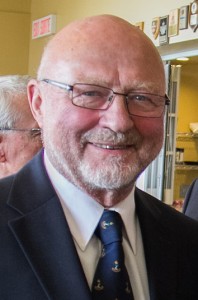 H3948 Dr. John Plant, sent the Dean of Arts, S124 Dr Ron Haycock, and me to sit in
H3948 Dr. John Plant, sent the Dean of Arts, S124 Dr Ron Haycock, and me to sit in  on the meetings of the Officer Professional Development Working Group (OPDWG). This group had been convened in the wake of the Officer Development Review Board (ODRB or Morton Study), and was charged with developing concrete proposals from the ODRB recommendations. One of those recommendations was for the establishment of a College of Continuing Military Education at RMC. That recommendation was not accepted, but Dr Haycock and I returned from the OPDWG with a mandate and some funding to launch a small continuing studies program at RMC. We struck a committee, scrounged some personnel and started the program with about 120 students in the fall of 1996. In 1997, the Division of Continuing Studies was created, and I was appointed its first Dean.
on the meetings of the Officer Professional Development Working Group (OPDWG). This group had been convened in the wake of the Officer Development Review Board (ODRB or Morton Study), and was charged with developing concrete proposals from the ODRB recommendations. One of those recommendations was for the establishment of a College of Continuing Military Education at RMC. That recommendation was not accepted, but Dr Haycock and I returned from the OPDWG with a mandate and some funding to launch a small continuing studies program at RMC. We struck a committee, scrounged some personnel and started the program with about 120 students in the fall of 1996. In 1997, the Division of Continuing Studies was created, and I was appointed its first Dean.
The timing couldn’t have been better. Minister of National Defence Doug Young had identified a lack of education in the officer corps as one root cause of the Somalia tragedy and the subsequent public outcry. The new Division was well-poised to tackle that concern. Over and above the ministerial requirement for more education, there was a groundswell of demand in the Forces for the new RMC degrees. Within a few years the Division was offering courses to several thousand officers and NCOs. This remains for me the outstanding example of an effective RMC response on short notice to a critical need of the Canadian Forces. That’s another story worth telling.
e-veritas: It sounds as if there is more than one story here.
Dr Jim Barrett: Oh indeed. There are many stories linked to this history, some of which you’ve encountered in earlier interviews. There’s the story of how, when CMR was closed, the link with RMC was maintained through la Compagnie du Fort Saint-Jean, which developed into l’escadron Richelieu and eventually the present RMCSJ. There’s the story of the War Studies Program, and the success of Dr Ron Haycock’s efforts to offer that program at the Canadian Forces College in Toronto. There’s another story about how RMC’s educational outreach activities contributed to the success of Canadian Forces efforts to deal with the complexity of multinational operations in Bosnia, Afghanistan, and elsewhere. The decade following the closure of our sister Colleges will prove, I believe, to be one of the most significant in this College’s history. During that time, the steps were taken to shape the College as the kind of institution that Canada and the Canadian Armed Forces needs. The traditional model of an elite school where a select few are anointed with some kind of royal jelly is simply not a sustainable one for the twenty-first century.
e-veritas: You attended CMR and RMC. Any highlights?
Dr. Jim Barrett: I’m a Newfoundlander, born in St John’s. My early schooling in St John’s and Grand Falls provided a junior matriculation which meant that CMR was the only military college open to me. I enrolled in the Royal Canadian Air Force as a prep-year cadet at le Collège militaire royal de Saint-Jean on 3 September 1959. Now that was a cultural shock. Thinking back, it was a whole collection of shocks: recruit discipline, university studies, French Canada and, for a Newfoundlander, just coming to the mainland was an experience.
There are lots of memories from those days, many of them of routine things. I remember the camaraderie of the 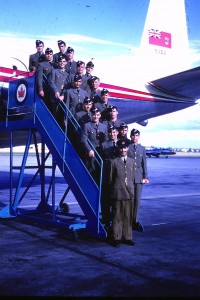 cleaning rooms, where we gathered to spit-shine our boots, polish our brass and whiten our web belts. The conversations there were as intense as in any pub. We paraded for everything. There were barbershop parades and pay parades. We didn’t earn a lot, but it was more than ample. I will never forget running circles. A circle meant running around the parade square- about a third of a mile- in the dress of the day. Senior cadets would award circles for poorly shined boots, dust in your room or just about anything. Circle parade formed up in front of DeLéry Hall before breakfast, and just after classes, and delinquents could run off up to four circles.
cleaning rooms, where we gathered to spit-shine our boots, polish our brass and whiten our web belts. The conversations there were as intense as in any pub. We paraded for everything. There were barbershop parades and pay parades. We didn’t earn a lot, but it was more than ample. I will never forget running circles. A circle meant running around the parade square- about a third of a mile- in the dress of the day. Senior cadets would award circles for poorly shined boots, dust in your room or just about anything. Circle parade formed up in front of DeLéry Hall before breakfast, and just after classes, and delinquents could run off up to four circles. 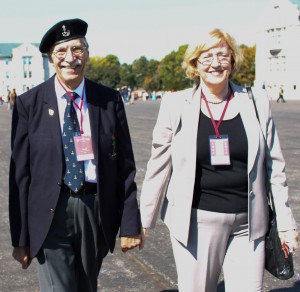 Running winter circles in a greatcoat before breakfast could be fairly strenuous, and cadets would sometimes pass out mid-circle. In Prep Year I had close to the Maisonneuve Squadron record for circles. My standout memory from Junior year was hardly a highlight- I had a failing average at fall mid-terms. I remember the Registrar calling me in to say he wanted to take the opportunity to meet me before I was sent home. As it turned out, I wasn’t sent home and by the end of the year I stood near the top of the class. I never looked back and three years later graduated from RMC in Honours Mathematics and Physics. Senior year at CMR brought something completely different- I met the girl whom I would marry two and a half years later. We have just celebrated our 50th anniversary, so I expect Corrie would agree that 1962 was a banner year. She lived just down the road from the College gate, so every Saturday I would knock at her door and we would walk together to the Sports Palace (now the Pavillon Vanier) for a movie followed by a dance in the lounge. Not surprisingly, I have a great affection for the popular music of the 1950s and early 1960s.
Running winter circles in a greatcoat before breakfast could be fairly strenuous, and cadets would sometimes pass out mid-circle. In Prep Year I had close to the Maisonneuve Squadron record for circles. My standout memory from Junior year was hardly a highlight- I had a failing average at fall mid-terms. I remember the Registrar calling me in to say he wanted to take the opportunity to meet me before I was sent home. As it turned out, I wasn’t sent home and by the end of the year I stood near the top of the class. I never looked back and three years later graduated from RMC in Honours Mathematics and Physics. Senior year at CMR brought something completely different- I met the girl whom I would marry two and a half years later. We have just celebrated our 50th anniversary, so I expect Corrie would agree that 1962 was a banner year. She lived just down the road from the College gate, so every Saturday I would knock at her door and we would walk together to the Sports Palace (now the Pavillon Vanier) for a movie followed by a dance in the lounge. Not surprisingly, I have a great affection for the popular music of the 1950s and early 1960s.
e-veritas: What was CMR like in the early 60s?
Dr. Jim Barrett: In 1959 CMR had only been open 7 years so many of the buildings and facilities were new. There were three squadrons of about 120 cadets each: Maisonneuve, Champlain, and Cartier, each housed in its own barracks of the same name. Classes took place in DeLéry Hall, and sports in the Sports Palace or adjacent fields. Drill was on the Parade Square or in the Drill Hall. We ate at a small Cadet dining hall, located next to Maisonneuve squadron and were marched to chapel every Sunday, either to the Catholic chapel across from the Dining Hall or the Protestant chapel by the river near the Officers’ Mess.
At that time, the first two years at CMR and Royal Roads were very similar to those at RMC, except that at CMR all programs were given in both in French and English. All CMR and Royal Roads graduates moved on to RMC after Second Year, and there the academic program was given in English only. The Francophone students found RMC’s all English courses a brutal shock. The preparatory year at CMR was designed to accommodate the high schools in Quebec and the Maritimes. While Royal Roads did not have a preparatory year, its program was designed to accommodate the high school programs in the Western Provinces. The main difference was that they didn’t offer as much Calculus as Ontario high schools. The fall and winter terms at all three colleges were much as they are now. But there was a third Spring Term devoted to practical subjects like drafting and surveying, as well as drill and sports. I believe the Spring Term was abolished in the mid-seventies.
e-veritas: You earned a doctorate overseas. Any highlights?
Dr. Jim Barrett: Following release from the Canadian Forces, I became a student at King’s College, University of London, and obtained my doctorate there in theoretical physics in 1975. Corrie, the two boys and I moved to the countryside for two years and I commuted to London. We had no money, no car and no debt. In those days, a British doctoral program was very different from a North American one. Typically, a student was given a problem, some initial references, sporadic access to his or her professor and then turned loose to fend for him or herself. The essential question was, “Can you swim with the big fish?” Those who couldn’t would show up less frequently for afternoon tea, and eventually would simply not come at all. It was all very civilized, and very intimidating. I loved it.
e-veritas: What are your areas of research interest
Dr. Jim Barrett: My doctoral thesis addressed a long-standing problem in the configurational properties of long chain polymers. I’m rather proud of that work. I was able to work with some very distinguished scientists, very bright people. Together we produced some fine results, published some important papers, and gave our names to an equation that, some forty years on, is still in use by polymer scientists. The statistical mechanics of polymer chains was the main focus of my research activities until the mid-nineties, when I became interested in the larger issues of military education, and the inevitable tension that exists between scholarly and operational objectives. That’s a fascinating subject, one that deserves more serious study. The work of military education is largely carried out by officers and professors doing their jobs as they would in any military unit or in any university, but at RMC there’s a rich interplay between the military and academic values and cultures that gives this institution its unique strength and character.
e-veritas: You have had a long association with the Colleges and the Forces. What stands out for you?
Captions: (L) Commandant, 2364 A/C Len Birchall performing the ceremonial kick-off at the RMC- University of Manitoba exhibition game; OCdt Barrett in the background.
(R) 2001 Spring Convocation, Jim Barrett hooding, Adrienne Clarkson, Governor General of Canada from 1999 to 2005.
Dr. Jim Barrett: After almost 50 years in the Canadian Armed Forces and the Public Service, there are obviously a lot of memories. I worked with many remarkable and committed people, military and civilian, and I will forever be grateful for those personal and professional associations. In retirement, it might be said that to a great extent one lives in a world of memories. I do have some favorites. I relish the time I served with 405 Squadron as a navigator- my young man’s adventure, I suppose- but most of my recollections are bound up, one way or another, with the College. I have been here as cadet, officer, professor, and dean, and I spent my last six years observing the College from the Canadian Defence Academy Headquarters. My wife Corrie and I have attended countless functions here: graduation balls, parades, hockey games. Our children grew up running around the College grounds. These were all good years, and they have given us some very good memories.
e-veritas: What are you doing these days?
Dr. Jim Barrett: These days, I enjoy the retired life, and spending time with family, especially our six grandchildren. I manage to stay involved with military education as a volunteer with a NATO-sponsored outreach program- the Defence Education Enhancement Program or DEEP. My efforts are directed primarily to the Republic of Armenia, a former Soviet Republic, providing advice as it strives to build- effectively from scratch- a military education system for a modern army. That too, has proven to be an amazing learning opportunity.
e-veritas: When you as an honorary graduate provided a convocation address at RMC in 2012, you spoke about RMC. (https://everitas.rmcalumni.ca/?p=77181)
Dr. Jim Barrett: Yes. This is a remarkable institution, and it has always represented the best of Canada for me. Behind the iconic ceremonials and traditions is a modern, lean and highly adaptable educational establishment, one that has universal respect in the world of military education. As I noted in that address, RMC’s history is a continuing account of how this institution adjusted to meet the current needs of the Canadian Armed Forces, all while maintaining its reputation as a respected university. That is no mean feat, one that owes as much to the Minister and the leadership of the Canadian Forces, as it does to wise and effective College leadership. The military-academic partnership is not always an easy one. Making it succeed takes work, but this College has developed, for over a century, within the political, linguistic and geographic challenges that define our country, and that process has shaped the very Canadian character of this exceptional military College.
e-veritas: Anything else you would like to add?
Dr. Jim Barrett: Only to say thank you for this opportunity to reminisce.


